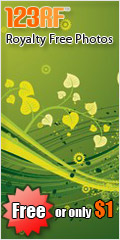Al di là di quanto detto circa le origini preistoriche del Design Organico, direi che la nascita del Design Organico moderno, ossia come oggi lo intendiamo, risale al decennio tra il 1930 e il 1940. In particolare possiamo fissare la data del 1940 riferendoci al già citato concorso "Organic design in home furnishing" indetto in quell'anno dal MOMA di New York.
Se ci riferiamo a quel concorso, però, dobbiamo fare anche nomi e cognomi ed, in particolare, i nomi da fare sono quelli di Charles Eames e Eero Saarinen che vi parteciparono congiuntamente e che aprirono la strada a nuove esplorazioni artistiche. Il prodotto che presentarono fu questo, la "Organic Chair":

Questi stessi due designers, a mio avviso, crearono, per proprio conto, prodotti ancor più significativi negli anni a venire. Mi riferisco, in particolare, alla chaise longue "La Chaise" di Charles e Ray Eames del 1948
 e alla sedia "Tulip" (che non ha la forma di un tulipano!) di Eero Saarinen del 1956.
e alla sedia "Tulip" (che non ha la forma di un tulipano!) di Eero Saarinen del 1956.

Doveroso mi sembra, poi, ricordare un altro oggetto, antecedente a tutti quelli presentati, concepito dalla geniale mente di un altro famoso designer scandinavo dell'epoca, con chiara ispirazione organica. Mi riferisco al vaso "Savoy" di Alvar Aalto del 1936.

--------
Beyond what I said about the prehistoric origins of Organic Design, I would say that the birth of modern Organic Design, which like today understand it, goes back to the decade between 1930 and 1940. In particular, we can fix the date of 1940 referring to the above-mentioned competition "Organic Design in home furnishing", held that year by MOMA in New York. If we refer to that competition, however, we must do also names and surnames and, in particular, the names are to be done are those of Charles Eames and Eero Saarinen who participated jointly and that opened the way for new artistic explorations. The product presented was the "Organic Chair." These same two designers, in my opinion, have created for their own account, even more significant products in the years to come. I refer, in particular, the chaise longue "Chaise" by Charles and Ray Eames in 1948, and to chair "Tulip" (which does not have the shape of a tulip!) of Eero Saarinen, 1956. Due seems, then, to recall another object, created before all those submitted, designed by the brilliant mind of another famous Scandinavian designer of the period, with clear organic inspiration. I am referring to the vase "Savoy" by Alvar Aalto, 1936.



 Toyo Ito - Lampada Mayuhana per Yamagiwa, 2007
Toyo Ito - Lampada Mayuhana per Yamagiwa, 2007 Toyo Ito - Libreria Sendai per Horm, 2005
Toyo Ito - Libreria Sendai per Horm, 2005




 "Tongue" by Pierre Paulin, Artifort, 1967
"Tongue" by Pierre Paulin, Artifort, 1967 "Floris" by Gunter Beltzig, Wuppertal, 1967
"Floris" by Gunter Beltzig, Wuppertal, 1967 








 e alla sedia "Tulip" (che non ha la forma di un tulipano!) di Eero Saarinen del 1956.
e alla sedia "Tulip" (che non ha la forma di un tulipano!) di Eero Saarinen del 1956.



